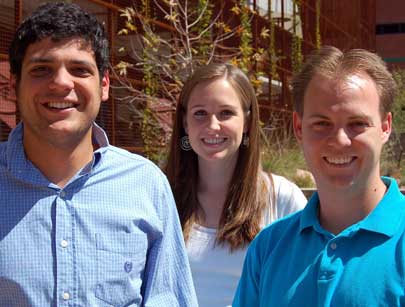Mar 18, 2007Universal Avionics, a flight-management systems manufacturer based in Tucson, Ariz., is about to install an RFID-based system to track how long moisture-sensitive microchip components are exposed to air. Designed by a team of three researchers at the University of Arizona, the system is slated to be put in place next month, at a cost of about $2,000.
Universal Avionics first contacted the researchers in the fall of 2007. "They came to us looking for a solution," says Bonnie Latham, a senior at the University of Arizona majoring in industrial engineering, and the project's lead systems designer. "We were presented with a problem, and they said they saw RFID as being a potential solution."
To manufacture the circuit boards it makes, Universal Avionics assembles the components and fuses them together through a baking and soldering process. If overexposed to humidity, the components no longer fuse properly when they are heated, says Universal Avionics' material control manager, Brenda Hughes. Some components can tolerate 156 hours or more of contact with the open air before absorbing too much moisture, while others can withstand only about 50 hours. If they near their exposure limit, the parts must be put through the baking process immediately, or else be thrown away.
It is often time-consuming to measure the exact length of time components are exposed to air. In the past, parts have been stored in vacuum-sealed bags identified by means of paper labels. When a bag is opened or resealed, an employee records the time on the attached label.
With the new RFID-based system, Universal will place parts on trays or in reels, then store them in desiccators, also known as dry boxes (provided by TDI International), that use nitrogen gas to displace moisture-filled air. Researchers are attaching a SkyeTek ultrahigh-frequency (UHF) reader complying with the EPC Gen 2 standard to the dry box, using a USB cable to send data to a dedicated computer running software developed by the research team.
Each tray will have an Alien Technology EPC Gen 2 RFID tag attached to it. If a tray is removed from the dry box, the reader will fail to receive a transmission from the tray's RFID tag, and will send an alert to the back-end system, at which time the system will begin tracking how long the tray is outside the box. The software is designed to correlate specific RFID tag numbers with that reader so that the interrogator can send an alert if a specific tag is not present.
After all components on a particular tray have been used and sent to be baked, Hughes says, the tag can be reprogrammed and reused with the tray. The researchers were able to keep costs low because they developed their own software and utilized a hardware package provided by SkyeTek at a reduced price.
Latham says she and co-researchers Jesse Green, the team's technical leader, and Jeremy Wright, the project leader, were aware of a similar moisture-tracking RFID system sold by Cogiscan. However, she says, the Cogiscan system was more expensive than the $2,000 budget stipulated by Universal Avionics and offered advanced features that were unnecessary for this application.
According to Hughes, the system the students developed stayed within the $2,000 budget, with enough hardware to initially track trays in one dry box. "Universal has been very positive throughout the process and has been really eager [to use it]," she says. "I think this will be a great application."
Hughes estimates the system will save the company about $5,280 annually in manpower that was previously spent recording times on labels, as well as about $20,000 that is currently spent baking components that have gotten too close to their shelf life and must be baked before they become unusable and need to be discarded. The baking process, Hughes says, is a high cost to the company and not always necessary if the parts are not allowed to sit outside the vacuum bag or dry box for too long.
"It's going to be a huge time-savings, and its going to be a huge savings of money," Hughes says. "The U of A kids have done a fabulous job on this project. They've impressed their professors and us." Universal Avionics intends to expand from one dry box to at least three, she notes, depending on the success of the initial deployment.


